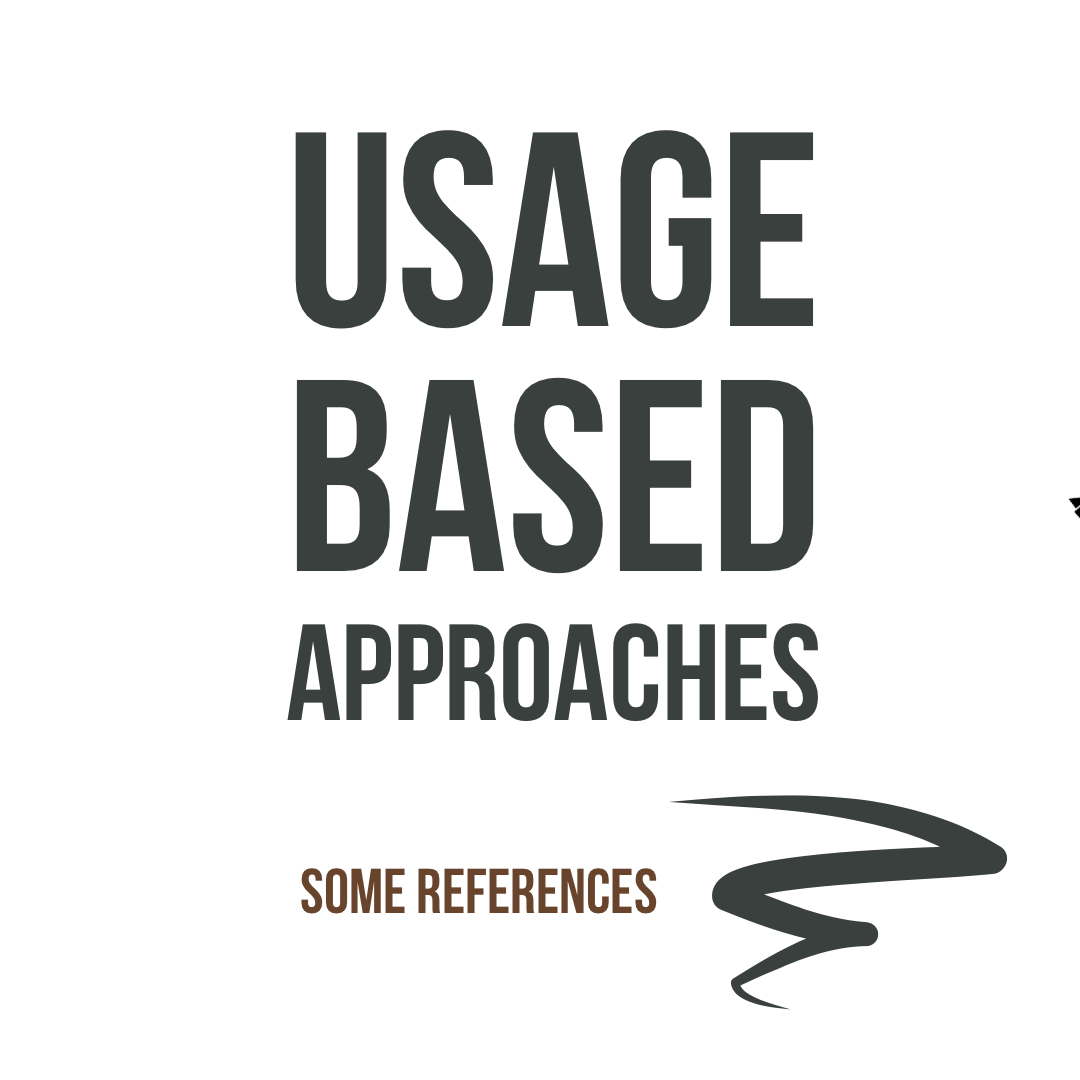A selection of extracts form : Tyler, A. (2010). Usage-Based Approaches to Language and Their Applications to Second Language Learning. Annual Review of Applied Linguistics, 30, 270-291. doi:10.1017/S0267190510000140
The central idea in usage-based models is that a user’s language emerges as a result of exposure to numerous usage events (Kemmer & Barlow, 2000), that is, situated instances of the language user understanding or producing language to convey particular meaning in a specific communicative situation. When a speaker engages in communication, it is assumed that she is attempting to achieve specific interactional goals using intentionally chosen linguistic strategies aimed at members of her speech community. Tying usage events to particular speech communities reflects the understanding that actual language use is culturally and contextually embedded. (p.271)
In the United States, Byrnes and her colleagues (e.g., Byrnes, 2009; Byrnes,
Maxim, & Norris, in press) have successfully developed a genre-based curriculum for advanced learners of German as a foreign language. The focus is on close reading of genre-defined texts and analysis of the situated choices writers make in order to create meaning. Thus, the reading-writing-speaking connections are of central concern. The close reading involves intensive analysis of genre based usage of lexicon, grammatical choices, and rhetorical structure in reading and writing. Texts are presented as “models for the meaning-making resources available in the language system; texts are instances of linguistically construed cultural situations that themselves are reflective of the entire cultural system”. (p.274)
Part of the ability to form schema is importantly connected to humans’ large memory capacity and sensitivity to linguistic input and input frequency. In fact, studies of frequency effects (e.g., Bybee, 2003, 2006; Bybee & Moder, 1983; Ellis, 2002a, 2002b, 2008a,b) have shown that humans are quite sensitive to the frequency with which they have encountered words and the constructions in which words are encountered, down to evidencing reaction time sensitivity to how likely they are to hear a verb in the present tense versus the past tense. The growing body of evidence amassed by Tomasello (e.g., 2003) and his colleagues (e.g., Lieven & Tomasello, 2008) indicates that first language learning is itembased and frequency driven. Their work shows that young children are highly
attuned to the specific exemplars of language in the input and the context in which they are used. (p.281)
Recall that CL argues that syntax itself is meaningful and that syntactic patterns are templates abstracted over many instances of utterances. Moreover, there are no derivations or transformations of a more basic syntactic pattern to a second, derived pattern. Thus, Goldberg represented the double object construction (Subj-X Verb Obj-Y Obj-Z) as meaning X caused Y to receive Z, as in Hiro gave Yun the book . This construction contrasts with the caused-motion construction (Subj-X Verb-Obj Y Oblique object Z) which means X caused Y to move to Z, as in Lissa threw the football to Mike. A few studies demonstrating the usefulness of Goldberg’s construction grammar (Goldberg, 1995, 2006) in L2 learning are beginning to emerge: Mellow (2006) for teaching relative clause constructions; Manzanares and Rojo Lopez (2008) for double object constructions;
Strauss, Lee, and Ahn (2006) for Korean completive constructions. (p.285)
